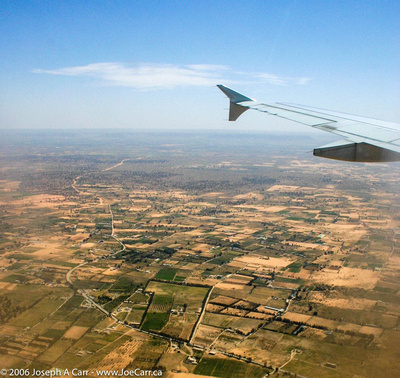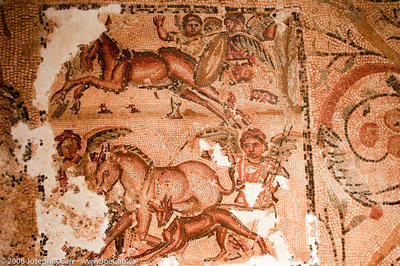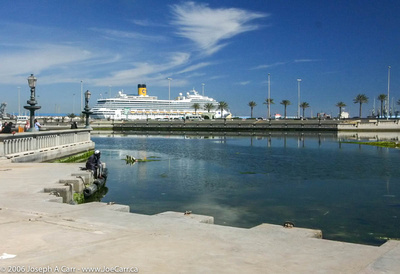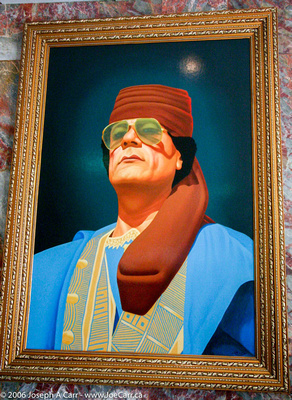2006 Total Solar Eclipse – Libya
March 25, 2006 – Saturday – It’s 6:30am when I wake up, and when I stick my head out the hotel window, I hear the Muslims being called to worship by chanting being broadcast from loudspeakers in minaret towers in the mosques around the city. Today we travel to the ancient Roman city of Sabratha, about 80km west of Tripoli.
March 26, 2006 – Sunday – Today we travel to the ancient Roman city of Leptis Magna, just over 100km east of Tripoli. There are lots of olive trees along the highways around Tripoli. Sheep are sometimes being grazed in the olive groves, and are always being watched by shepherds. I even spotted a sheep dog once!
This afternoon, I join three of our group for a walk through the Souk (market) in the Medina (old city). This evening, there is a Tuareg cultural display across the street from our hotel, so after dinner a few of us walk over to see the displays. The Tuarag women are very camera shy, so I put my camera away. Later in the evening there is Tuarag folkloric dancing and singing, and our little group end up being the guests of honour! Despite it being very dark, I take some video and hope for the best.
March 27, 2006 – Monday – This morning Fatid takes us on a walking tour of the Medina, which includes the Souk. I take several photos in the Souk today because it is less busy. I’m very careful to avoid taking photos of local people whose faces would be recognizable. The Tuarag women last night were shielding themselves from any cameras. I know Arabs do not like their photos to be taken, especially women.

On the way back to our hotel, we stop at the Safir Restaurant for lunch. One of the other Libyan tour guides joins our table, so I ask him what one litre of gas costs. He tells us most cars use diesel, which costs 0.15 Dinar/litre (about 0.09€/litre).
Later, Fatid helps me find some Arab headgear: a Ghutra (fabric) and an Igal (rope) to go with it in the men’s wear section of the Souk just before it closes. I now have a “Lawrence of Arabia” head cover to wear when we get to the desert, so I will probably use it during the eclipse observations to ward off the expected hot temperatures.
We are told that Libya has about 40 years of oil supply left, and coincidentally, they also have about 40 years of water supply left. Our bottled water comes from the Great Manmade River – a water supply system that pipes water from aquifers found deep under the Sahara to the coastal cities in a huge network of aqueducts.
After lunch, we go to the airport to catch our flight to Benghazi, our jumping off point to see the Total Solar Eclipse from the eclipse camp south of Jalu, in the middle of the Sahara Desert.
March 31, 2006 – Friday – After breakfast this morning we walk through Tripoli to see the Jamahiriya Museum, which houses many of the originals of the statues we saw copies of earlier at Sabratha and Leptis Magna. There is a 5 Dinar camera charge at the Museum (10 Dinars for video), which we encountered at all historical sites in Libya. It would have been valuable to have an English-speaking guide, since all the informational signs were in Arabic.
Our time in Libya ends today with a flight to Rome aboard Alitalia airline.




































